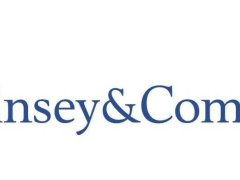What is a business model canvas? Wikipedia defines it as “a strategic management template for developing new or documenting existing business models”. It is not a business plan, but rather a visual language designed to align business activities that produce value by illustrating potential trade-offs. The idea was initially proposed by Alexander Osterwalder.
A business model canvas for the American healthcare system
Phase 1 of the modelH CoCreation Forum aims to create a business model canvas specifically for healthcare. To do so we must first agree on what defines value within the American healthcare ecosystem. Our definition of value is based on Michael Porter’s work in What is Value in Health Care? – “the patient health outcome achieved per healthcare dollar spent”. Therefore, a value-based healthcare business model must result in:
- Increased access to necessary care through an engaged delivery system;
- Reduced aggregate cost of care, with a market-driven, balanced incentive and reward model; and
- Improved consumer experience yielding an informed decision maker aligned to their risk and reward.
Our healthcare business model canvas, which we are calling modelH, must also work in a market-driven system. Better ideas can then be generated and evaluated using that engine because they 1) create shared value and 2) can succeed in the marketplace. Likewise, current models and trends can be evaluated through this engine to see if they are effective.
The basis for modelH is Alex Osterwalder’s work on business model generation but modified to fit the uniqueness of the American healthcare domain. Our community will participate in modifying the Osterwalder model as needed to create the modelH Healthcare Business Model Canvas.
Source: The Business Model Canvas by Alexander Osterwalder
Our work on Phase 1 of for modelH will take on two distinct conversation types.
The 1st conversation type will be to look at the core Building Blocks of Osterwalder’s model and debate their nuances in regards to healthcare business models. Wikipedia defines these core elements as:
- Customer Segments – the customer groupings a business model serves.
- Value Propositions – the collection of products and services a business offers to its customers.
- Channels – the way a company brings its value proposition (product) to its customer segments.
- Customer Relationships – the type of connection a company wants to create with their customer.
- Key Activities – the most important tasks in the execution of a company’s value proposition.
- Key Resources – the internal assets required to create value propositions for customer segments.
- Key Partners – the external relationships needed so a company can focus on their Key Activities.
- Costs – the most important financial concerns of a company’s business model.
- Revenue – the way a company makes income from each customer segment.
The 2nd conversation type will be to define the new Building Blocks needed for healthcare and how they should be incorporated into the canvas. The additions to be discussed are:
- Externalities – the external forces (regulations) imposed on healthcare business models.
- Jobs-to-be-Done – the customer’s JTBDs, which may not adhere to a company’s value proposition.
- Intermediaries – the influencers/intermediaries between the healthcare customer and the product.
- Experiences – due to multiple intermediaries, customer experience bears a greater look.
- Cost Drivers – for healthcare to exists, the cost drivers must come under control.
- Payments Sources – in healthcare, customers are separated from payment sources in many cases.
- Platform – the healthcare ecosystem is interdependent, requiring an infrastructure to work.
We will do this in the order of importance to a business model – starting with the Customer and ending with the Platform. The result will look something like this:

Source: The Healthcare Business Model Canvas by Kevin Riley
So, step up to the plate and get involved.
- Click here to join (the big red button on the side!): http://bit.ly/modelHForum
- Follow us online at: https://twitter.com/ModelHForum
- And you can read more about this project in my linked posts: modelH (part 1) | modelH (part 2) | modelH (part 4)
To your health,
The Team at imagine.GO





